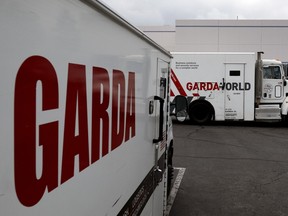As the favourite to win the next federal election, Conservative leader Pierre Poilievre has sparked a heated debate with his proposal to slow down Canada’s population growth. In an interview with reporters on Thursday, Poilievre emphasized the need for a more balanced approach to immigration, citing concerns over housing, jobs, and healthcare.
"We have to have smaller population growth, there’s no question about it," Poilievre stated unequivocally. He also criticized Prime Minister Justin Trudeau’s government for adding new residents at "three times the rate of the housing stock." This criticism comes as Canada’s population growth rate has surged to 3.2 per cent, one of the world’s fastest and above any other developed country.
The Current State of Population Growth in Canada
Poilievre’s comments follow a surge in temporary residents to Canada, which has pushed its population to an all-time high of 41 million. This rapid growth is putting pressure on housing markets and the social safety net. According to Poilievre, the country needs to have a more manageable population growth rate that aligns with the growth in housing, health care, and employment.
The numbers are striking: the number of jobs rose by 1.7 per cent from the year before, while the total number of housing starts in the second quarter was up 2.6 per cent from the previous year. Keeping the population growth rate below the lowest of these figures – 1.7 per cent – would represent a halving of the current rate.
Poilievre’s Immigration Plan: A Return to Pre-2015 Levels
While Poilievre did not specify an exact number for annual immigration targets, he indicated that he would run the immigration system the way it was done in the 30 years before Trudeau came to power in 2015. During this period, the population growth rate averaged 1.1 per cent annually from 1984 to 2014.
In contrast, Trudeau’s government is currently targeting about half a million new permanent residents a year – significantly up from the rate of about 300,000 annually when Trudeau was first elected in 2015. Immigration Minister Marc Miller has already announced plans to scale back the pace in non-permanent immigration, aiming to reduce the number by about 20 per cent over the next three years.
Miller’s Plans for Reform
In an interview with CTV News this week, Miller stated that he intends to look at Canada’s permanent immigration target "and put real options on the table for the prime minister and for other cabinet ministers to look at, and not cosmetic changes simply to deal with public opinion." He emphasized that the goal is to make "real significant change" to the country’s immigration policies.
Trudeau’s Response
Prime Minister Trudeau has acknowledged the need for a more balanced approach to immigration. In an interview on Monday, he stated that the government is "looking at the various streams to make sure that as we move forward, Canada remains a place that is positive in its support for immigration, but also responsible in the way we integrate and make sure there’s pathways to success for everyone who comes to Canada."
Implications of Poilievre’s Proposal
Poilievre’s proposal to slow down Canada’s population growth has sparked a heated debate about the country’s immigration policies. If implemented, his plan could have significant implications for the economy, housing markets, and social services.
While some argue that Poilievre’s plan is necessary to address concerns over housing affordability and social cohesion, others contend that it will harm the economy and Canada’s reputation as a welcoming nation.
As the debate continues, one thing is clear: Canada’s population growth rate is a pressing issue that requires careful consideration and attention from policymakers.



